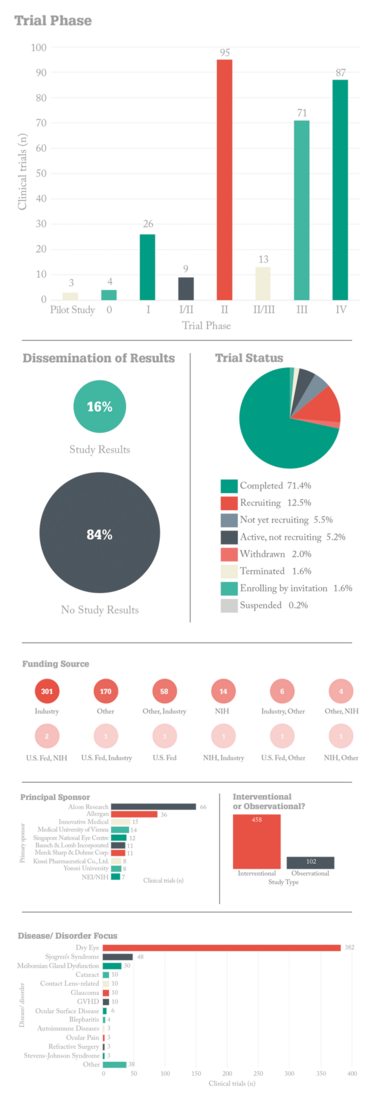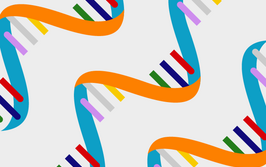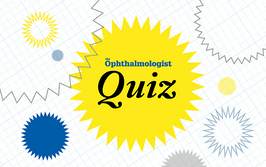It’s estimated that there are nearly 100 million people worldwide who have some form of dry eye disease (DED) – and that between 10 and 30 percent of patients aged over 50 years have this disorder. However, most people with DED go undiagnosed, and for those who do receive a diagnosis, the most commonly offered treatment is artificial tears. Diagnosis can be challenging – in some, signs fail to match the symptoms, and in others, symptoms fail to match the signs, and this is partly why it’s one of the most underdiagnosed eye conditions in the world today. Dry eye symptoms can be the result of many disorders – meibomian gland dysfunction, tear fluid insufficiency, allergy, LASIK, and many autoimmune diseases, in addition to being a side effect of many commonly prescribed drugs – and it’s a market that’s potentially one of the largest in eyecare. To find out where the clinical research into dry eye has been focused, and where ongoing clinical trials might take the field, we performed an analysis of dry eye clinical trials on clinicaltrials.gov.
We searched clinicaltrials.gov for: “dry eye,” “Meibomian” and “Sjögren,” and analyzed the data in Microsoft Excel 2013. Inappropriate records were excluded, and the full text of each record examined for additional details to be recorded into the spreadsheet.














